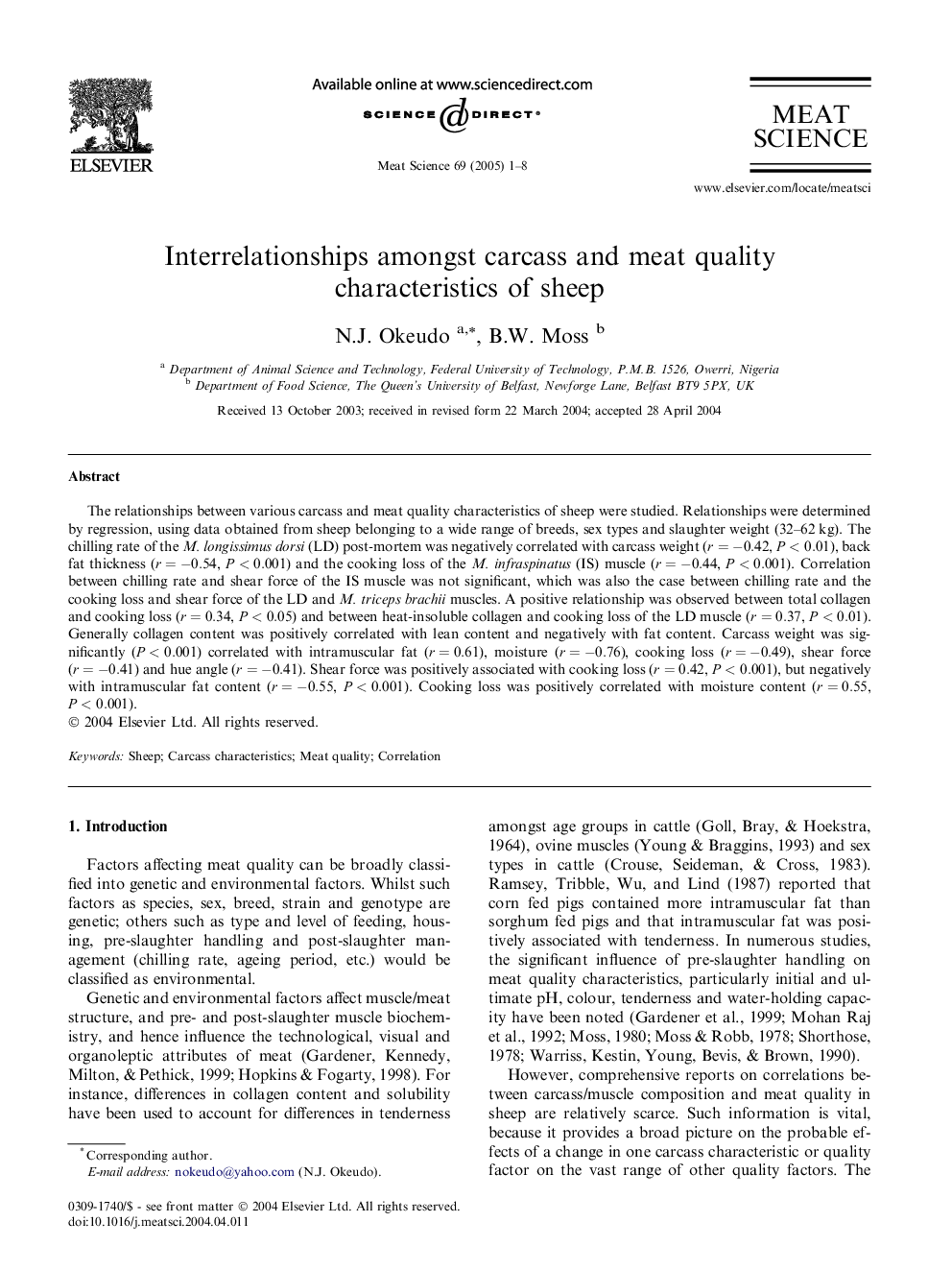| Article ID | Journal | Published Year | Pages | File Type |
|---|---|---|---|---|
| 8983698 | Meat Science | 2005 | 8 Pages |
Abstract
The relationships between various carcass and meat quality characteristics of sheep were studied. Relationships were determined by regression, using data obtained from sheep belonging to a wide range of breeds, sex types and slaughter weight (32-62 kg). The chilling rate of the M. longissimus dorsi (LD) post-mortem was negatively correlated with carcass weight (r=â0.42, P<0.01), back fat thickness (r=â0.54, P<0.001) and the cooking loss of the M. infraspinatus (IS) muscle (r=â0.44, P<0.001). Correlation between chilling rate and shear force of the IS muscle was not significant, which was also the case between chilling rate and the cooking loss and shear force of the LD and M. triceps brachii muscles. A positive relationship was observed between total collagen and cooking loss (r=0.34, P<0.05) and between heat-insoluble collagen and cooking loss of the LD muscle (r=0.37, P<0.01). Generally collagen content was positively correlated with lean content and negatively with fat content. Carcass weight was significantly (P<0.001) correlated with intramuscular fat (r=0.61), moisture (r=â0.76), cooking loss (r=â0.49), shear force (r=â0.41) and hue angle (r=â0.41). Shear force was positively associated with cooking loss (r=0.42, P<0.001), but negatively with intramuscular fat content (r=â0.55, P<0.001). Cooking loss was positively correlated with moisture content (r=0.55, P<0.001).
Related Topics
Life Sciences
Agricultural and Biological Sciences
Food Science
Authors
N.J. Okeudo, B.W. Moss,
